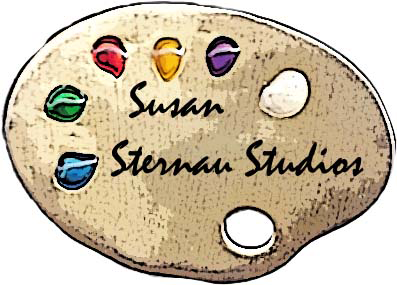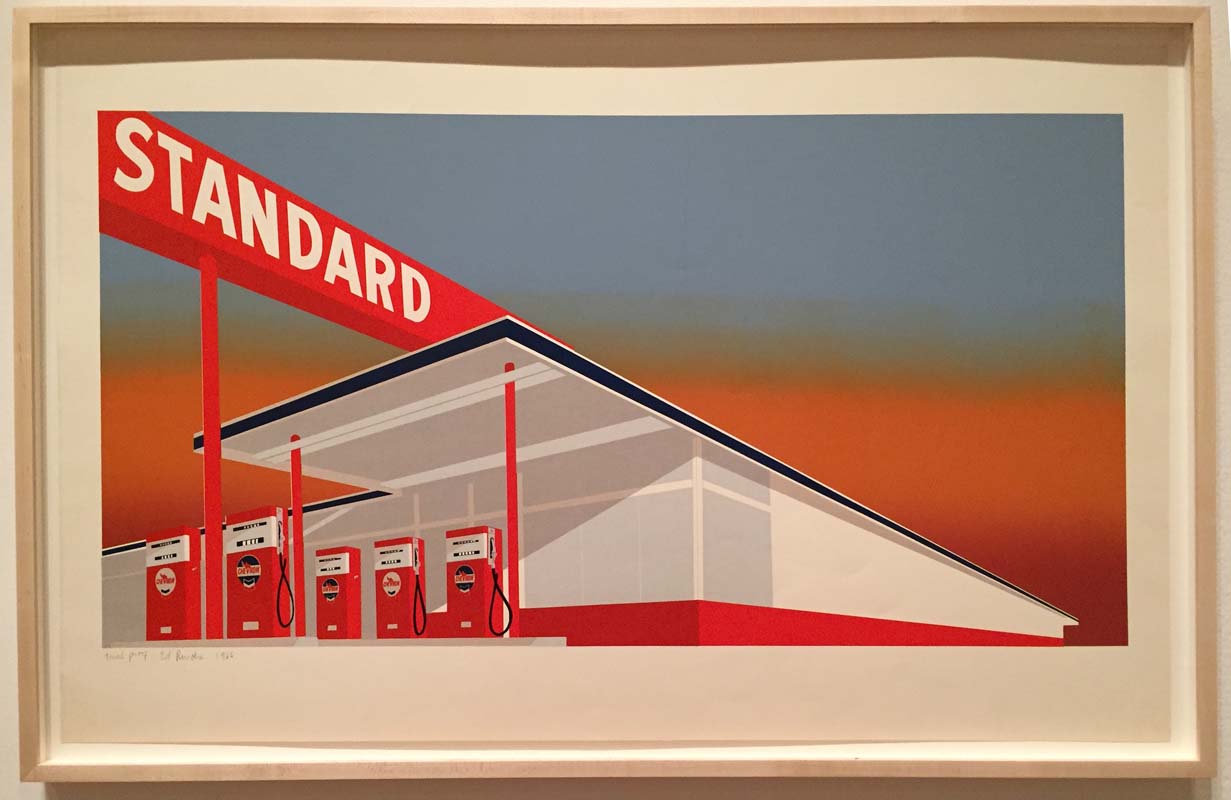Art Review
Ed Ruscha: A Western Odyssey
Ed Ruscha:
Ed Ruscha developed as an artist in the Pop Art culture of the 1960s along with his better known contemporaries, Andy Warhol and Roy Lichtenstein. Leaving his home state of Oklahoma at 18, Ruscha drove through the Southwest along Route 66. The sights, signs, and scenes of that first journey have shaped his art over a lifetime. Ruscha’s art began as Pop Art; his art was inspired by images from popular culture. In the way he experienced life on the road, his art also ties into the Beat Generation. Jack Kerouac’s famous book, On the Road, tells of another mid-20th-century youthful trip across America.
Gas Stations
Ruscha’s best known paintings are of gas stations, such as this Standard Station (a brand we know now as Chevron). You can see the Chevron logo if you look closely at the pumps. Ruscha painted a number of variations of the Standard station. The painting greets visitors to the exhibit at the De Young Museum in San Francisco, on display through October 9, 2016.
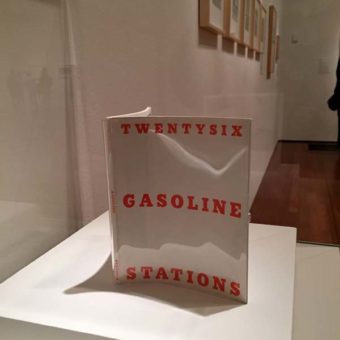
Ruscha also took black and white photos of the gas stations along his route, which he published as a book Twentysix Gasoline Stations, in 1963. Included are a Union Station in Needles, CA, a Shell Station in Daggett, CA, a Phillips 66 in Flagstaff Arizona, A Texaco in Jackrabbit, AZ, and a Flying A in Kingman, AZ. As the age of fossil fuels fades in the 21st century, so do Ruscha’s images of gas stations such as
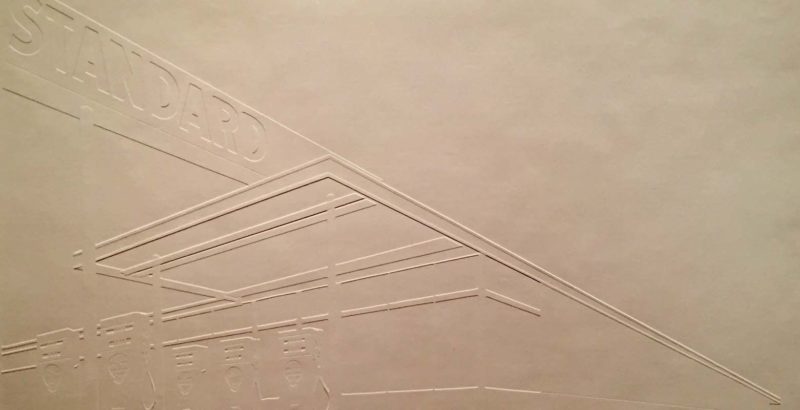
Ghost Station (2011), and the dark shell of
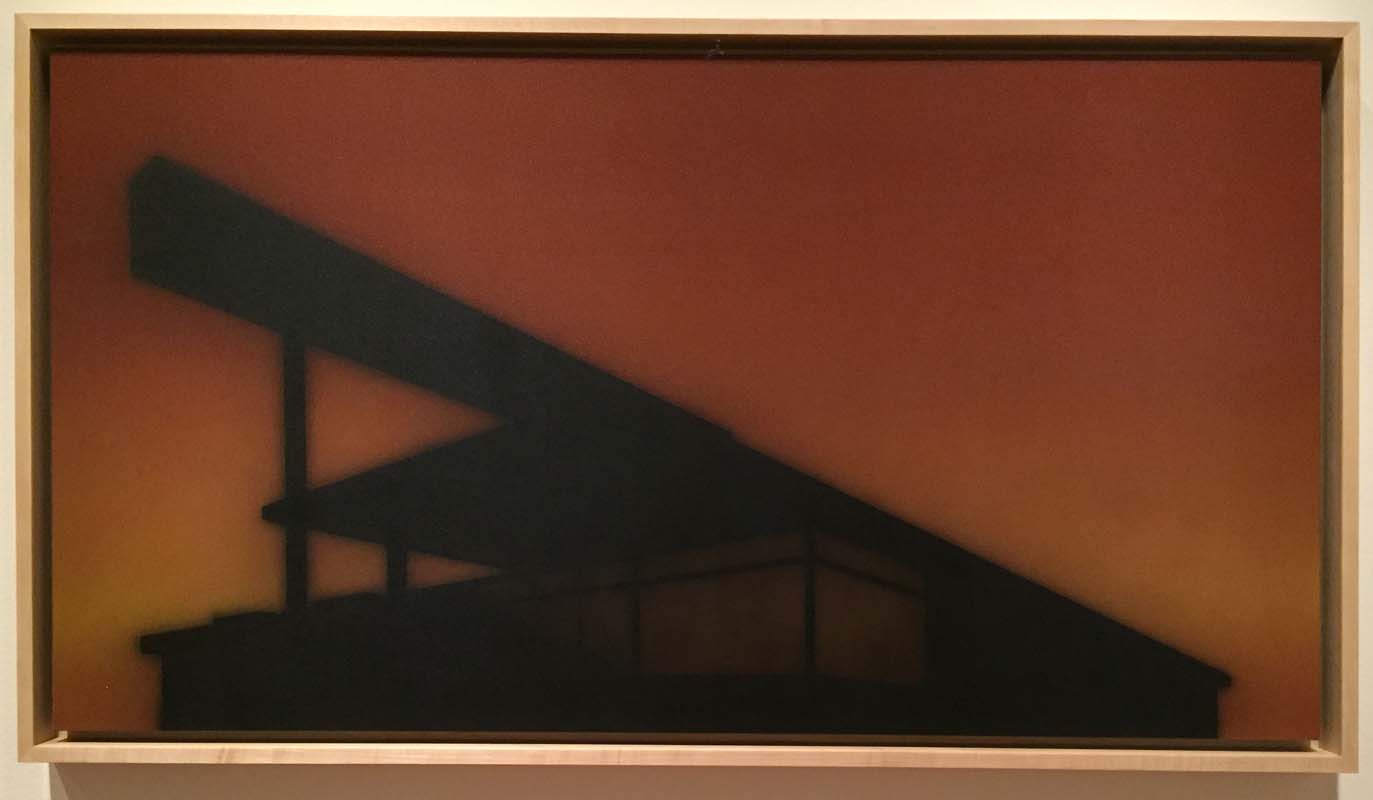
Station (2003).
Signs
Ruscha uses images of signs in a number of his paintings, and they have a spooky, evocative quality.
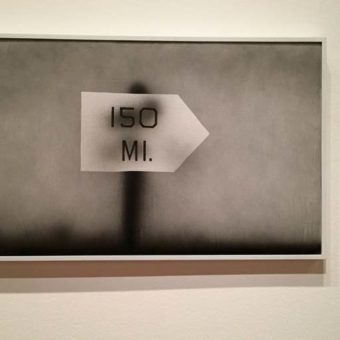
150 Miles, (1989), for example, points away to somewhere, but there is no context, no “to” or “from.”
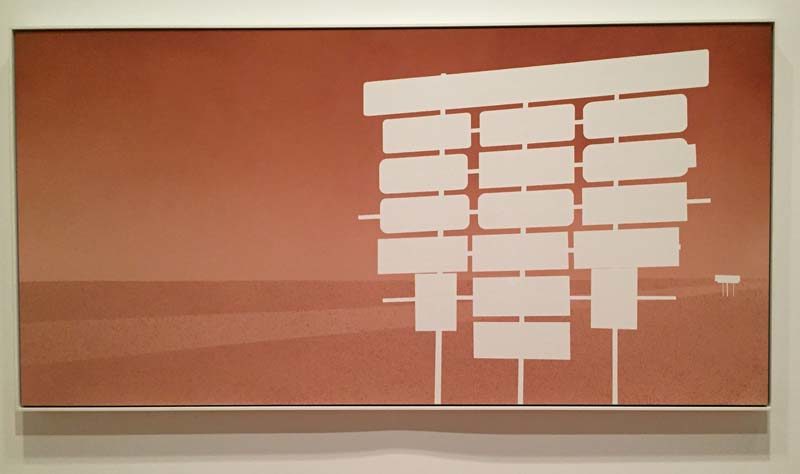
Untitled (2004) is a collection of signs by the side of the road, but they are blank. The message is that there is no message.
Poetry of Signs
Later works use phrases in simple white letters against landscape backgrounds to create a kind of visual poetry.
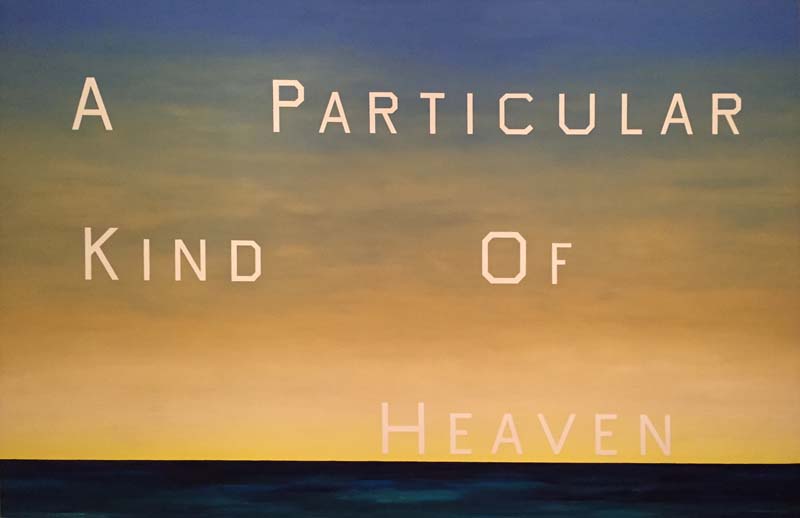
A Particular Kind of Heaven (1983) is written large on a flat western sunset sky.
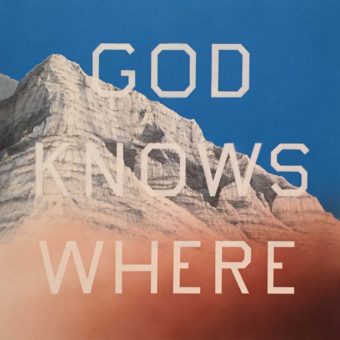
God Knows Where (2014) is almost carved into the cliffs of a rocky Southwestern landscape like a western Mount Rushmore.
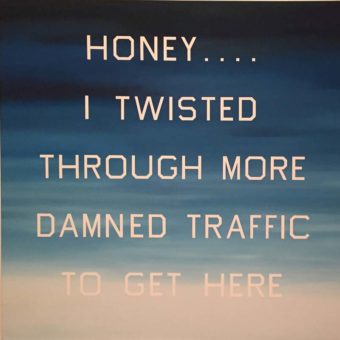
Honey I Twisted Through More Damned Traffic to Get Here seems etched into the flat blue sky of a Los Angeles summer day. There are also Ruscha’s “liquid words” paintings.
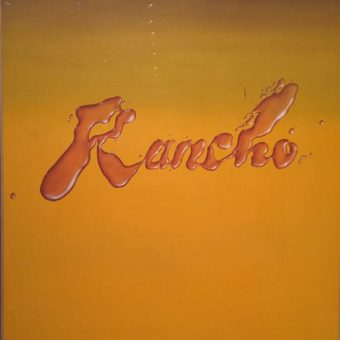
Rancho (1968) fools your eye; the letters shimmer like they’ve been poured out from a Coke can onto a mustard yellow diner counter. Rustic Pines (1967) looks like the script from a roadside cabin sign, sketched in pencil, but it is actually drawn with gunpowder.
Hollywood Sign
Unusual drawing and painting materials are something that Ruscha experimented with early, before art school graduates were all competing to see who could use the weirdest materials. One version of Ruscha’s iconic
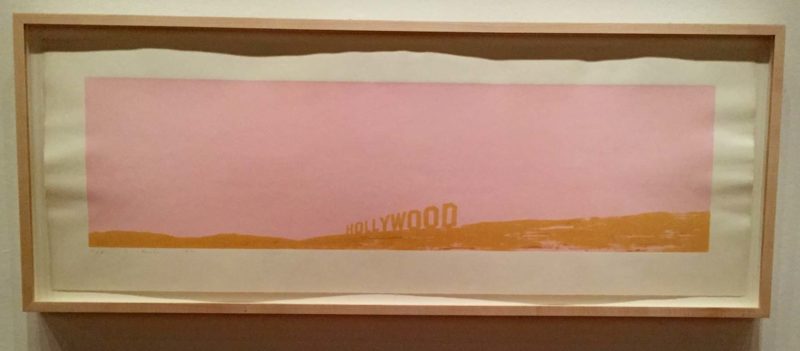
Hollywood sign is painted with Pepto Bismol (pink) and caviar (orange). Ruscha also painted with coffee, chocolate, berry juice, tomato sauce and other foods. Ruscha’s fascination with LA’s film industry tied in with his many paintings of the
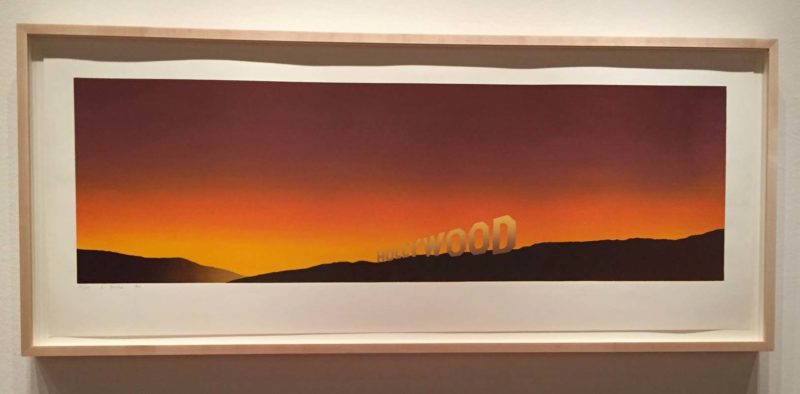
Hollywood sign. He relocates the sign in many paintings so that it appears dramatically against a sunset, instead of nestled into the hills as it is in reality.
Animals and the Vanishing West
Ruscha didn’t just paint western landscapes and photograph western buildings (there are whole series of photos of 1960s LA apartment buildings, swimming pools, and parking lots).
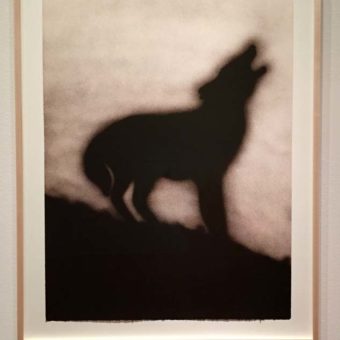
Howling coyotes and silhouetted
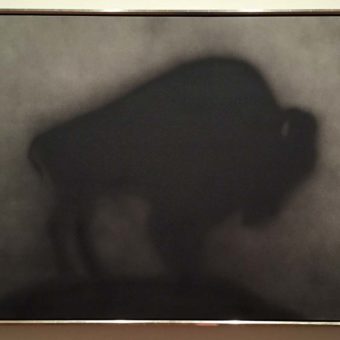
buffalos also became painting subjects, as iconic symbols of the vanishing wild American west. Ruscha brings the drama of film as well as film’s nostalgia to play in his paintings. Films are even referenced by scratched white lines on paintings that mimic damaged film from the pre-digital era. There is also a strong environmental theme that runs through the paintings.
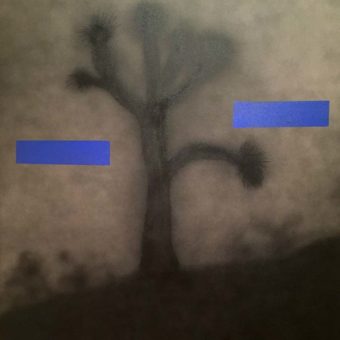
Joshua trees are painted somberly to chart their destruction by developers. Maps of LA streets are reduced to topographical, building-less blanks, as if nature has again reclaimed the city, and gas stations burn and fade away in this new era. There is a lot to think about in this show. Ruscha’s multiple messages remind me of the enduring ability of art to communicate.
